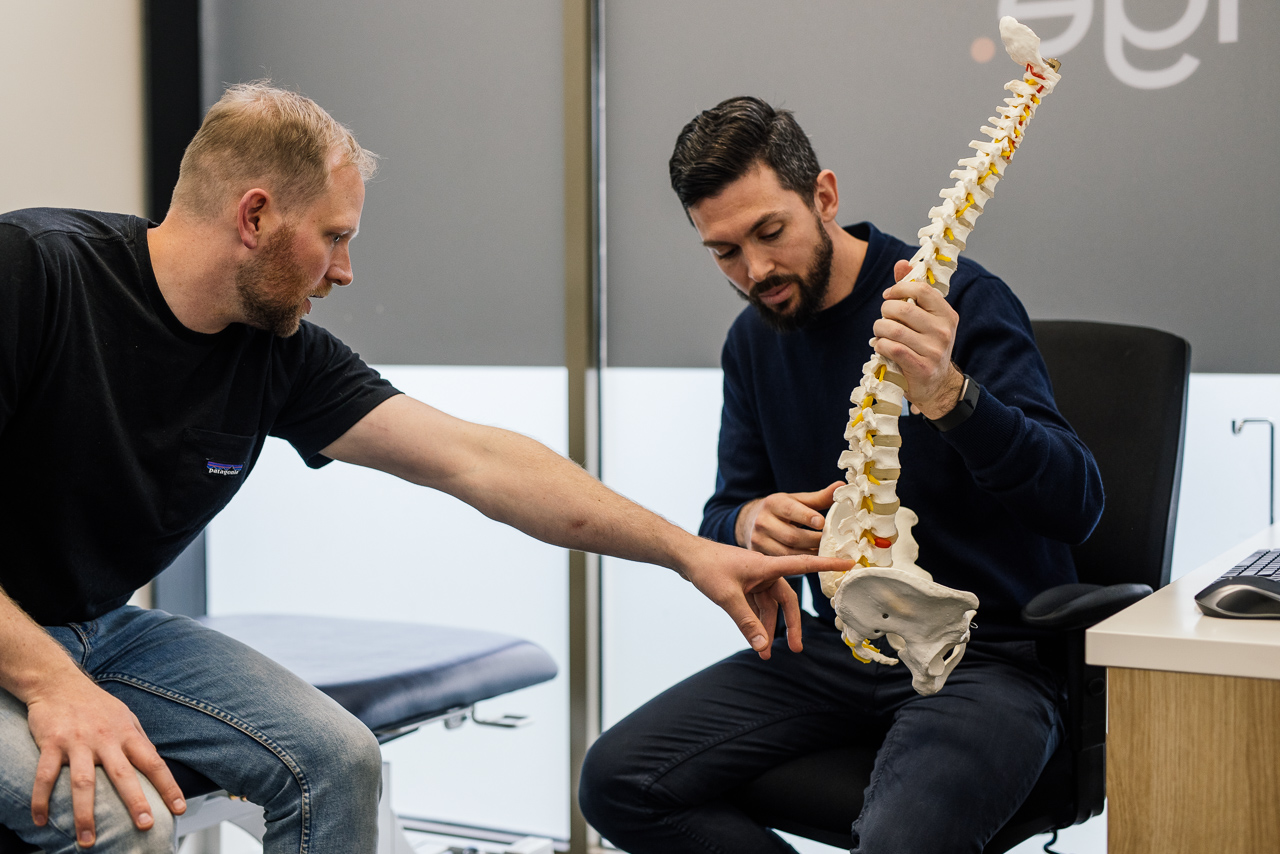Lumbar joint pain and stiffness, also known as lumbar facetogenic pain, is a common condition that affects the joints in the lower back. These joints, known as facet joints, are located between the vertebrae in the spine and can become painful and stiff due to injury, degeneration, or overuse. Symptoms of lumbar joint pain and stiffness can include pain in the lower back, stiffness in the lower back, and limited range of motion.
The pain may be sharp or dull and may be accompanied by muscle spasms. The treatment for lumbar joint pain and stiffness typically involves physiotherapy, and self-management strategies. Occasionally, medications are required.
Physiotherapy can help to reduce inflammation and improve flexibility and strength in the lower back, hips, and legs. Medications, such as nonsteroidal anti-inflammatory drugs (NSAIDs) and muscle relaxants, can help to manage pain and inflammation. In addition to these treatment options, there are several self-management strategies that can help to reduce the symptoms of lumbar joint pain and stiffness.
These include:
Stretching exercises: Gentle stretching can help to improve flexibility and reduce stiffness in the lower back, hips, and legs.
Strengthening exercises: Strengthening exercises target your core strength and the back and leg muscles. This helps to improve the stability of the lower back and reduce the risk of future injuries.
Good posture: Maintaining good posture can help to reduce the strain on the lower back and reduce the risk of injury.
Hot and cold therapy: Applying heat or cold to the affected area can help to reduce pain and inflammation.
Applying the 5 stages of rehab for lumbar joint pain and stiffness
Pain – Pain and symptom reduction is best achieved by reducing inflammation of the facet joints. This may mean treatment is focused on other tissues to reduce pressure on the facet joints. In some cases medication may be required to reduce inflammation around the joints, or reduce joint sensitivity.
Range of motion – Compression of the facet joints will result in reduced joint mobility and flexibility. Treating the underlying cause, reducing pressure along the path of the joints and practicing joint mobilization will help improve joint mobility and place you on the path to regain full range of motion.
Motor control – Learning to control where movement occurs and how to stabilize your joints under high loads reduces compression of the facet joints. Most episodes of lumbar joint pain and stiffness are associated with incorrect load distribution; overloading tissue around the facet joints, which results in joint compression and pain.
Strength – Strength training of the muscles and other soft tissues surrounding the facet joints builds a capacity to tolerate higher functional demand.
Maintain – Overloading tissues surrounding the facet joints will typically lead to a return of lumbar joint pain and stiffness. Ensuring range of motion, motor control and strength gains are maintained will help prevent the return of lumbar joint pain and associated stiffness.
For more information regarding general back pain please see: https://www.betterhealth.vic.gov.au/health/conditionsandtreatments/Back-pain, https://www.healthdirect.gov.au/back-pain


